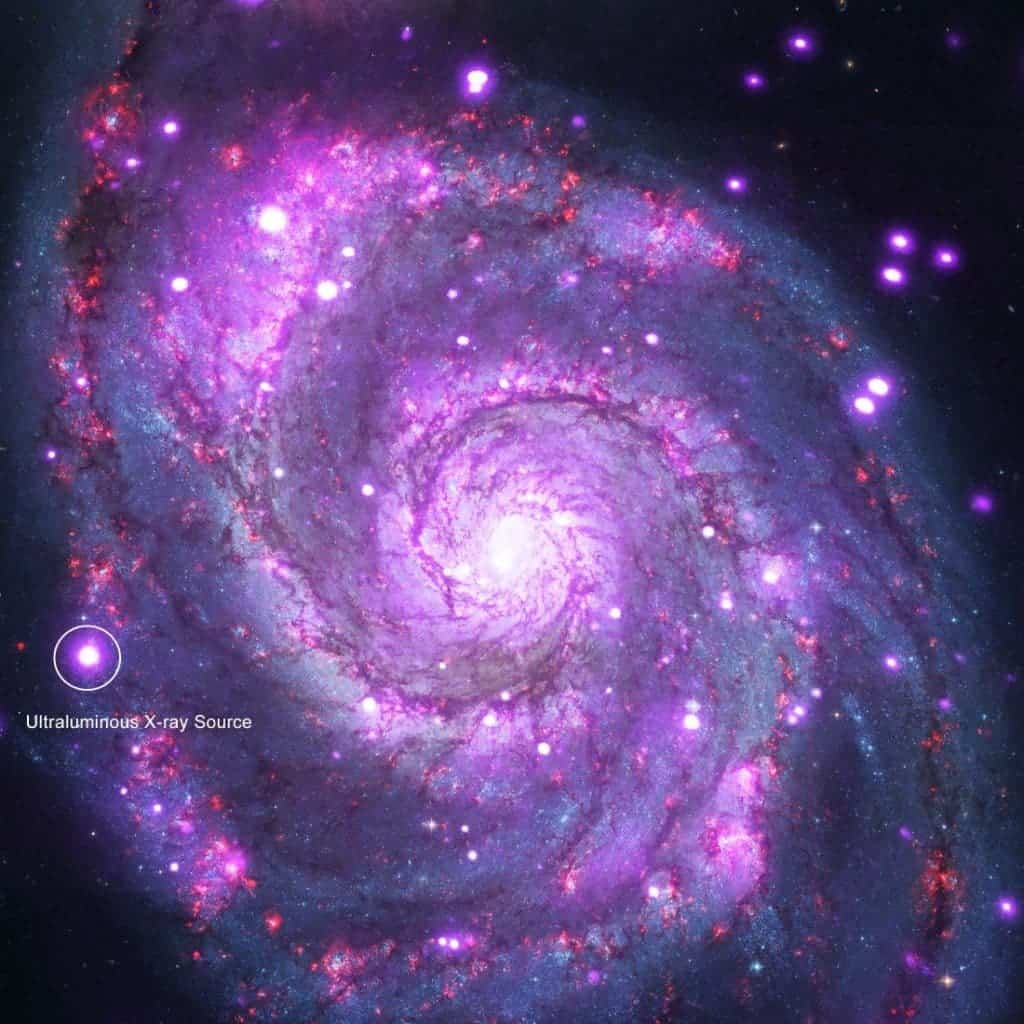A group of misbehaving neutron stars is breaking the limits of physics, and astronomers are struggling to understand why. Now, a recent study sheds new light on these incredibly bright structures.

They’re some of the brightest objects in the universe, and they surprised researchers from the moment they were discovered. In the 1980s, astronomers spotted bright sources of X-rays in the outer portions of galaxies — far away from the center, dominated by black holes. They called these bright structures ultraluminous X-ray sources, or ULXs, and initially, they assumed they were black holes. But in 2014, data from NASA’s NuSTAR and other space telescopes found that that’s not really the case. Instead, ULXs are extremely bright neutron stars.
Neutron stars are the burnt-out cores of massive stars that exploded, formed by the gravitational collapse of the remnants. This process is so violent that protons and electrons essentially melt into each other, creating neutrons, hence the name of the stars.
As a result, neutron stars are extremely dense, with one teaspoon of material weighing over one billion tons — as much as a mountain.
Somewhat like black holes, they pull surrounding material from them. As this material is pulled towards the neutron star, it heats up and glows with X-rays. However, at one point in the process, there comes a time when the push of the X-rays is stronger than the gravitational draw, and matter is simply pushed away. This point, the limit at which neutron stars can’t accumulate matter and give off X-rays, is called the Eddington limit. But here’s the problem: these massive neutron stars we call ULXs are breaking the Edington limit.
“In the same that we can only eat so much food at a time, there are limits to how fast neutron stars can accrete matter,” says Murray Brightman, a postdoctoral scholar at Caltech and lead author of a new report on the findings in Nature Astronomy. “But ULXs are somehow breaking this limit to give off such incredibly bright X-rays, and we don’t know why.”
In the new study, Brightman and his colleagues analyzed such a ULX in the Whirlpool galaxy, also known as M51, which lies about 28 million light-years away. Their attention was drawn by an unusual dip in the luminosity of this ULX. After ruling out all other possible explanations, they concluded that the cause of this dip is a phenomenon called cyclotron resonance scattering. This phenomenon occurs when charged particles (protons or electrons) circle around in a magnetic field.
Since black holes don’t have a magnetic field but neutron stars do, this is a telltale sign that M51 is, indeed, a neutron star. But this study says even more about the nature of M51, and might even allow astronomers to finally understand what gives ULXs the necessary fuel to keep burning up when they shouldn’t.
“The cyclotron absorption feature we found in the ULX in M51 could be caused by electrons or protons,” Brightman told ZME Science. “If protons, it would imply a very strong magnetic field helping the star to break the Eddington limit. If electrons, the magnetic field strength would be quite typical for a neutron star. It may still shine brighter than the Eddington limit in this case because the matter is channeled down an accretion column on to the star whereas the X-ray light escapes from the sides of the column. This reduces the interaction between the matter and radiation.”
However, if the cyclotron is from electrons, then the magnetic field wouldn’t be strong enough to help these stars break the Eddington limit. So it’s an important clue, but it might or might not be the decisive one.
Now, researchers want to carry out further investigations, acquiring more X-ray data on M51, and look for more cyclotron evidence around other ULXs.
“The discovery that these very bright objects, long thought to be black holes with masses up to 1,000 times that of the sun, are powered by much less massive neutron stars, was a huge scientific surprise,” says Fiona Harrison, the principal investigator of the NuSTAR mission. “Now we might actually be getting firm physical clues as to how these small objects can be so mighty.”
Unfortunately, there aren’t that many ULXs to go around, but researchers are working hard on solving these issues. It’s a tough riddle, but it’s certainly one that’s worth cracking.
“Since there are only a few neutron stars known that shine as ULXs, we still don’t know for sure what makes them different. We are working on figuring it out though!” Murray concluded.
The study, “Magnetic field strength of a neutron-star-powered ultraluminous X-ray source,” has been published in Nature Astronomy.


